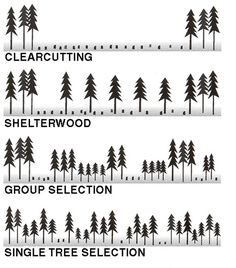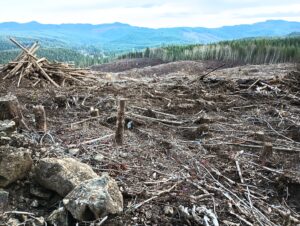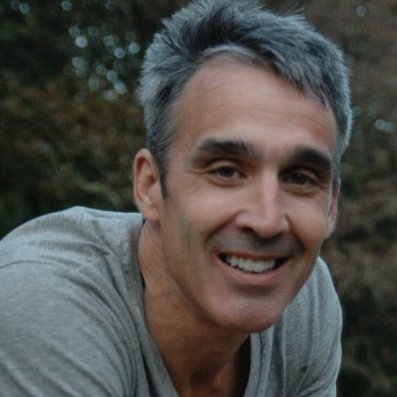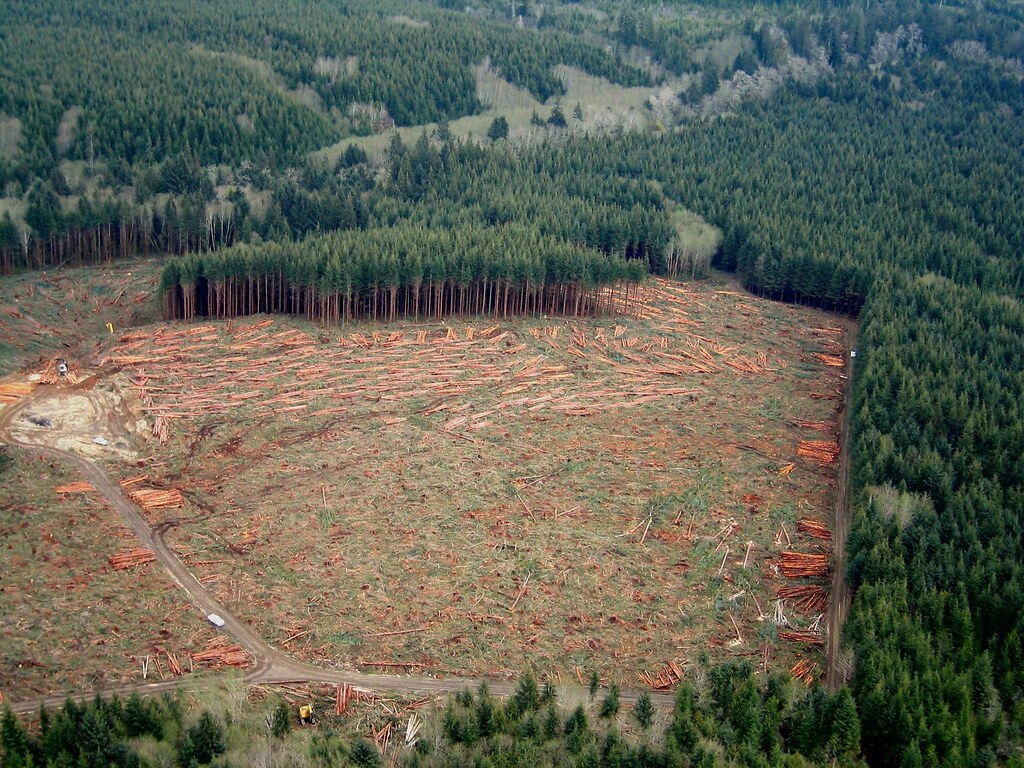In 2013, we purchased the 28 acres that is now the Vernonia Springs private park property. Managing this forestland, and watching how other forestland owners in the area manage their property has been quite an education. I was a member of the Upper Nehalem Watershed Council for eight years and acted as chairman for two of those years. My experience on the UNWC provided me with insight into how watershed councils and large timber companies interact. I now have a very good understanding of how timber companies manage their industrial forest land.
The forest management methodology used at 
The USDA reported that “Economically, uneven age-managed stands have produced periodic revenue that resulted in higher net present values than either clearcut or unharvested stands, and, unlike more exploitive procedures, did not deplete the residual stand value.” Read the USDA Article Here.
Columbia County where
It is a painful experience watching a forest being clear-cut. Clear-cutting leaves behind complete environmental destruction to what was once a thriving ecosystem providing habitat to countless numbers of plants, trees, animals and many other organisms. Watch This Video to see the difference between clear-cutting and selective harvest forest management. After the timber has been clear-cut, next comes aerial spraying of the freshly cut land with herbicides to ensure that any remaining vegetation is killed and not able to regrow. The following year, hybrid douglas fir seedlings will be planted closely to ensure as many trees per acre as possible. Unfortunately, replanting trees using this methodology can result in acidification of the soil (from all of the fir needles covering the forest floor with no other plant life), minimization of biodiversity, and groundwater depletion. Just replanting a monoculture of trees does not mean a healthy forest will follow later on. In fact, large-scale monoculture tree planting can be harmful or have minimal positive effects for the forest or on climate change mitigation. Read BBC Article to learn more.
Dehydration of the soil, top soil erosion and elimination of the forest canopy above streams and rivers negatively impacts fish populations by reducing water volume, increasing turbidity, and increasing water temperatures. Salmon in all fisheries in the Pacific Northwest are now in danger of extinction.
Leaving forests intact is a critical part of the solution to fight climate change. Learn More Here From OSU Dept. of Forestry. There is a win-win solution available where we can harvest our forests sustainably to meet wood product demand while also leaving behind a functioning ecosystem that is required to provide the services humans and other organisms need to survive in the future. Humans have deforested half of the planet. It is now time to face the reality of this moment and start working with nature and not against it. To learn more about how forests are the most important solution to fight climate change, read This Article from The Nature Conservancy.

Jeff is founder of Terra Vida Academy and has been actively involved in protecting nature for over 35 years.




